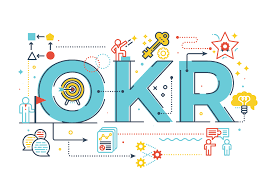OKRs are a great way to motivate teams by connecting individual and team goals with company objectives. The “goal-setting framework” is versatile enough to support for-profit and non-profit goals.
However, many teams fall short of the goals they set for themselves. A key to OKR success is having ambitious goals that stretch the team beyond their current capabilities.
1. Be Specific and Measurable
Developed by Andy Grove at Intel and taught to John Doerr, OKRs are a more agile version of Peter Drucker’s Management by Objectives (MBOs). They consist of an overarching objective that employees want to achieve within a certain time frame along with 3-5 key results that describe how the employee will accomplish the goal.
Each key result should be measurable, align with the objective, and be achievable by the team handling the task. The key results should be ambitious enough to make the objective a stretch goal and feel challenging but achievable. Ideally, the key results should also have a clear owner on the team who is responsible for tracking and finding ways to reach their goals. This will help the team members understand the impact their work has on the bigger objective.
2. Be Ambitious
OKRs provide a framework for clear goals and measurable strategies. They also enable teams to align their daily tasks and projects with strategic company objectives.
A good OKR goal is ambitious and inspires teams to push the boundaries. But they should still be realistic, so achieving the goals is a possibility. It is important not to have too many goals (ideally seven maximum). Too many objectives can lead to confusion and paralysis.
Google often sets stretch goals that are just beyond what seems possible, known as “stretch goals.” These are goals that force teams to rethink the way they work and ask difficult questions that might have otherwise been avoided. As a result, they are often more ambitious and more inspiring than simply achievable goals.
3. Be Flexible
The OKR framework encourages organizations to aim high. As the saying goes, “Shoot for the moon—even if you miss, you’ll land among the stars.” That’s why stretch goals (also called BHAGs) are so important to OKR methodology.
They help organizations set ambitious goals that can be broken down into manageable key results. Those key results should be achievable and measurable, but they should also challenge the team to do more.
When using OKRs, it’s important to evaluate and adjust them regularly. This ensures that the objectives are still aligned with business priorities and that the team members remain motivated to pursue them. It also gives teams an opportunity to learn from what worked and what didn’t, and establish new goals for the next quarter or semester.
4. Be Inclusive and Collaborative
When setting goals, teams should always seek input from other departments and stakeholders. This ensures that everyone is working towards the same goal and that goals are aligned across the company. It also helps to create more ambitious goals when teams work together to achieve them.
Finally, it’s important to remember that OKRs are not meant to be a replacement for KPIs. KPIs help manage ongoing processes and performance, while OKRs are used to set ambitious goals that will take time to accomplish.
To be effective, ambitious OKRs must bring value to the organization. They should push the team beyond the status quo and be inspirational while being realistic. For example, an ambitious goal could be to increase revenue per user (RPU) through strategies such as pricing optimization and upselling or cross-selling.
5. Be Accountable
The best way to ensure that your team stays accountable is to transparently track progress on each OKR throughout the quarter. This helps motivate teams to keep their goals front and center, and also provides a framework for fair and objective performance evaluations.
The goal of an OKR is to create a vision for where you want the company and its employees to be. This means that the objectives should be ambitious and challenging. A good rule of thumb is to set key results that are at least 70% of the way to being achieved. This stretches the company without being too challenging and encourages a growth mindset.
Aspirational OKRs, or “moonshots,” are a great way to challenge the company and push its employees to think outside the box. These types of OKRs are often harder to achieve, but are necessary for the organization’s long-term growth.







